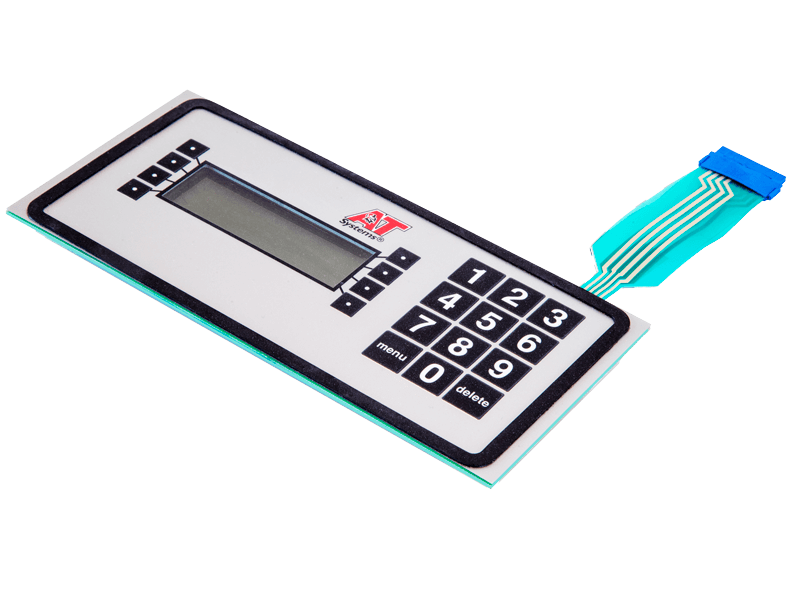Understanding Membrane Layer Switches Over: The Key to Reputable and durable Controls

What Are Membrane Layer Switches?
Membrane buttons are a sophisticated solution in the realm of individual interface innovation, combining performance and design seamlessly. These gadgets function as an interface in between customers and digital systems, integrating several elements right into a compact format. Typically constructed from flexible, slim layers of materials, membrane buttons are designed to respond to touch, enabling customers to connect with machinery and electronic tools efficiently.
The primary aspects of a membrane layer switch consist of a published circuit layer, visuals overlay, and a spacer layer that prevents unintentional activation. The graphic overlay can be customized to reflect brand name identification or individual preferences, boosting looks while making sure functionality. Membrane layer switches are generally made use of in different applications, consisting of medical tools, consumer electronics, and commercial equipment, owing to their resilience and resistance to environmental aspects such as moisture and dirt.
One of the vital advantages of membrane switches is their capability to hold up against wear and tear, making them perfect for high-traffic atmospheres. Additionally, they are light-weight and need very little area, enabling ingenious layouts in product development. On the whole, membrane layer switches represent a effective and practical option for modern electronic user interfaces, marrying technology with user-centric style concepts.
Exactly How Membrane Switches Over Job
The operation of membrane switches rest on a basic yet effective device that translates customer input into electronic signals. These buttons contain numerous layers, commonly including a graphic overlay, a spacer layer, and a circuit layer. When a customer presses the button, the top layer flaws, enabling a conductive element in the circuit layer to reach a matching conductive pad on the bottom of the visuals overlay. This call shuts the circuit and sends out an electronic signal to the device, suggesting that the button has actually been turned on.
The design of membrane layer switches can differ, yet they typically incorporate domes or tactile elements to provide feedback to the user, enhancing the general experience - membrane switch. The materials used in membrane buttons, such as polyester or polycarbonate, add to their sturdiness and resistance to ecological aspects, consisting of moisture and dust. The published circuits are commonly enveloped, which safeguards them from wear and tear over time.
Advantages of Membrane Layer Switches

Additionally, membrane buttons are recognized for their longevity. Constructed from robust materials, they are resistant to dirt, wetness, and physical wear, which substantially extends their life expectancy contrasted to typical mechanical switches. This durability makes them specifically suitable for high-traffic settings and applications calling for durability.
One more considerable advantage is the convenience of cleaning and maintenance. The smooth surface area of membrane layer switches decreases dust build-up and is typically unsusceptible spills, making them suitable for settings that call for constant sanitization.
Furthermore, membrane layer buttons use a streamlined profile, causing a thinner layout that can be incorporated right into numerous gadgets without including mass. This function not just improves the visual appeal however likewise adds to a much more ergonomic item design.
Applications of Membrane Layer Switches
Versatile and straightforward, membrane layer buttons locate applications across a broad variety of industries, consisting of medical tools, consumer electronics, and industrial equipment. In the clinical area, these buttons are integral to devices such as diagnostic devices, individual tracking systems, and mixture pumps, where dependability and simplicity of cleansing are vital. Their ability to maintain and endure severe settings capability makes them optimal for such applications.

In consumer electronic devices, membrane buttons are used in products like microwaves, washing makers, and push-button controls - membrane switch. Their smooth design enables user-friendly individual interfaces, improving the overall customer experience while giving durability and resistance to tear and use
Industrial tools likewise takes advantage of membrane buttons, especially in control panels for equipment and useful reference automation systems. These switches use security against dirt and moisture, guaranteeing consistent efficiency in difficult settings. Their customizable functions allow suppliers to tailor them to particular operational needs, enhancing effectiveness and functionality.
Selecting the Right Membrane Layer Switch
When selecting a membrane layer switch, it is necessary to take into consideration various variables that affect efficiency and viability for specific applications. more information The primary factors to consider consist of ecological problems, responsive responses, toughness, and layout requirements.
First, evaluate the operating atmosphere; switches exposed to dampness, chemicals, or severe temperatures require specific materials to make sure durability and functionality. Next off, examine the requirement for tactile feedback. Relying on user communication, some applications may gain from a responsive action to confirm activation, while others may choose a non-tactile design for visual reasons.
Resilience is another essential aspect; membrane layer switches need to be developed to withstand constant use, influences, and abrasion. Make sure the chosen switch can withstand the expected lifecycle, especially in high-usage situations.

Conclusion
In final thought, membrane changes serve as vital components in the design of long lasting and reliable control systems across different sectors. The flexibility of membrane switches permits for customized remedies that satisfy details operational requirements, strengthening their significance in modern technology.
Membrane changes stand for a crucial facet of modern user interface style, blending try this out performance with durability in various applications.Membrane buttons are an advanced remedy in the realm of customer interface innovation, incorporating capability and layout flawlessly. Normally built from adaptable, thin layers of products, membrane switches are developed to react to touch, allowing individuals to connect with equipment and digital gadgets efficiently.
The layout of membrane switches can differ, but they typically include domes or responsive elements to give comments to the individual, enhancing the general experience.In conclusion, membrane switches serve as crucial components in the style of dependable and resilient control systems throughout different markets.